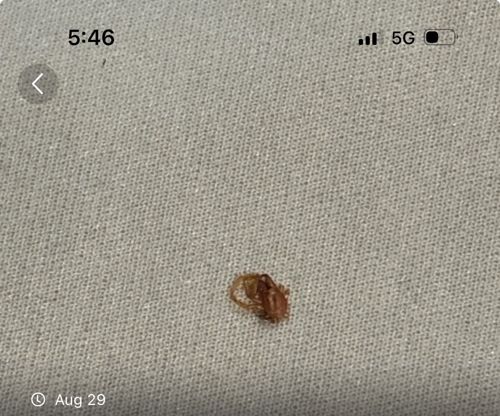Bed Bug (Likely a nymph or recently fed adult)
Scientific Name: Cimex lectularius (Most common species, though others exist)
Order & Family: Hemiptera (Order), Cimicidae (Family)
Size: Adults are typically 4-5 mm (0.16-0.20 inches) long, oval, and flattened. Nymphs are smaller and translucent before feeding.

Natural Habitat
Commonly found in human dwellings, particularly bedrooms, hiding in mattresses, box springs, bed frames, headboards, and cracks in walls or furniture. They can also be in luggage, clothing, and other personal items.
Diet & Feeding
Exclusively blood of warm-blooded animals, primarily humans.
Behavior Patterns
Bed bugs are primarily nocturnal, feeding on hosts while they sleep. They are skilled at hiding in cracks and crevices, making them difficult to detect. Females lay 1-5 eggs per day, which hatch in 6-17 days, and nymphs mature in about a month under ideal conditions. They can survive for several months to over a year without a blood meal.
Risks & Benefits
Risks: Bed bugs cause itchy red welts due to their bites, which can lead to secondary skin infections from scratching. They can also cause anxiety, insomnia, and mental distress. While not known to transmit diseases, their presence is a significant public health nuisance. Benefits: None for humans; they are a parasitic species and do not provide ecological benefits to human environments.
Identified on: 9/1/2025